Phlox paniculata, more often known as garden phlox, is a long-lived perennial that radiates the sense of an enduring romance. Large clusters of fragrant blooms in a dizzying array of colours, including white, pink, fuchsia, red, lavender, purple, and orange, adorn the tops of the robust, tall stems from June to early October. Butterflies and hummingbirds love the delicious nectar in these flowers, and they look stunning in summer bouquets.
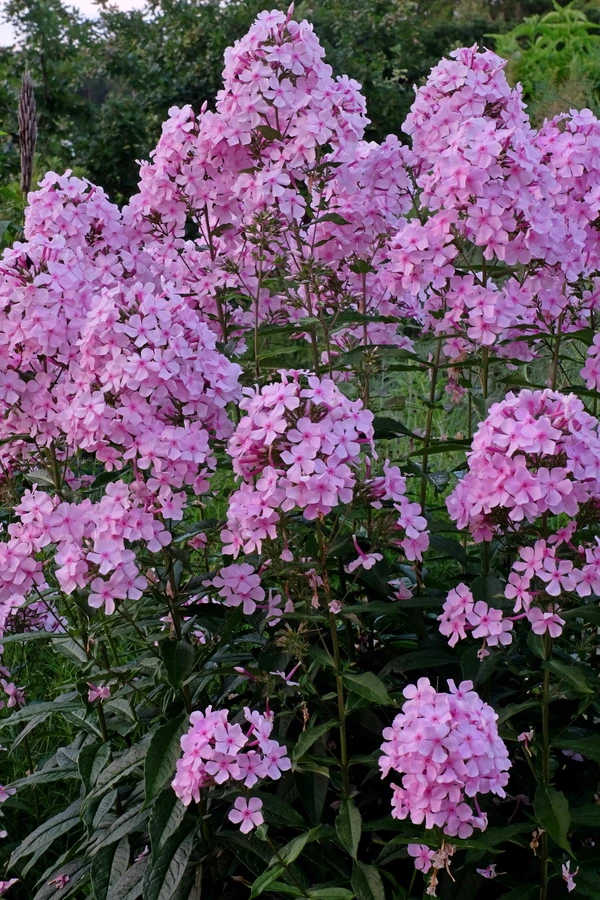
Source: Pinterest
Phlox: Facts
| Genus Name | Phlox |
| Common Name | Garden phlox |
| Plant Type | Perennial, annual |
| Light | Full sun |
| Season Features | Spring Bloom, Summer Bloom |
| Special Features | Attracts birds, cut flowers, fragrance, good for containers, low maintenance, drought tolerant |
| Propagation | Division, Seed, Stem Cuttings |
Phlox: Physical description
- Herbaceous Phlox plants may be either annuals or perennials. Leaves on these plants tend to be round or linear in shape.
- The five-lobed, tubular blooms are typically produced in large clusters.
- Several varieties have fragrant, colourful blooms in shades from white through pastel blue, purple, pink, and red.
- Each fruit contains a single seed. Phlox is a delicate plant with trumpet-shaped blooms that bloom in elongated clusters down the length of the stem and may be white, pink, or lavender.
- Its height may be anything between 60 and 180 centimetres.
- Small, lanceolate, and arranged in an opposing fashion, the leaves may be found both at the base of the inflorescence and all the way around it.
Phlox: Varieties
Blue Paradise
The purple-blue blossoms of Blue Paradise seem to shift hues throughout the day. It reaches a height of 3 feet and a width of 2 feet.
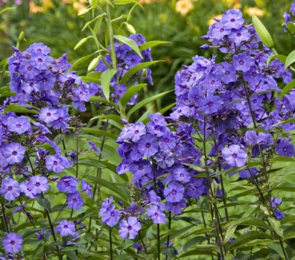
Source: Pinterest
Creeping Phlox
The colourful spring blossoms of creeping phlox cover the low-mounding shrub entirely. It has stiff, thorny, evergreen leaves that are just half an inch long. The average height is about 6 inches.
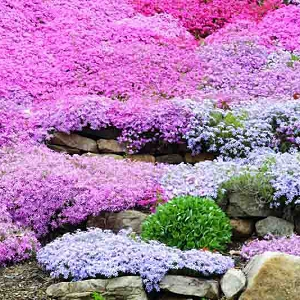
Source: Pinterest
David Phlox
David is a 4-foot tall, disease-resistant variety with fragrant, white blossoms.

Source: Pinterest
Franz Schubert
Huge, lilac-pink flowerheads appear on Franz Schubert phlox plants over the summer and early autumn. Height at maturity is about 3 feet.
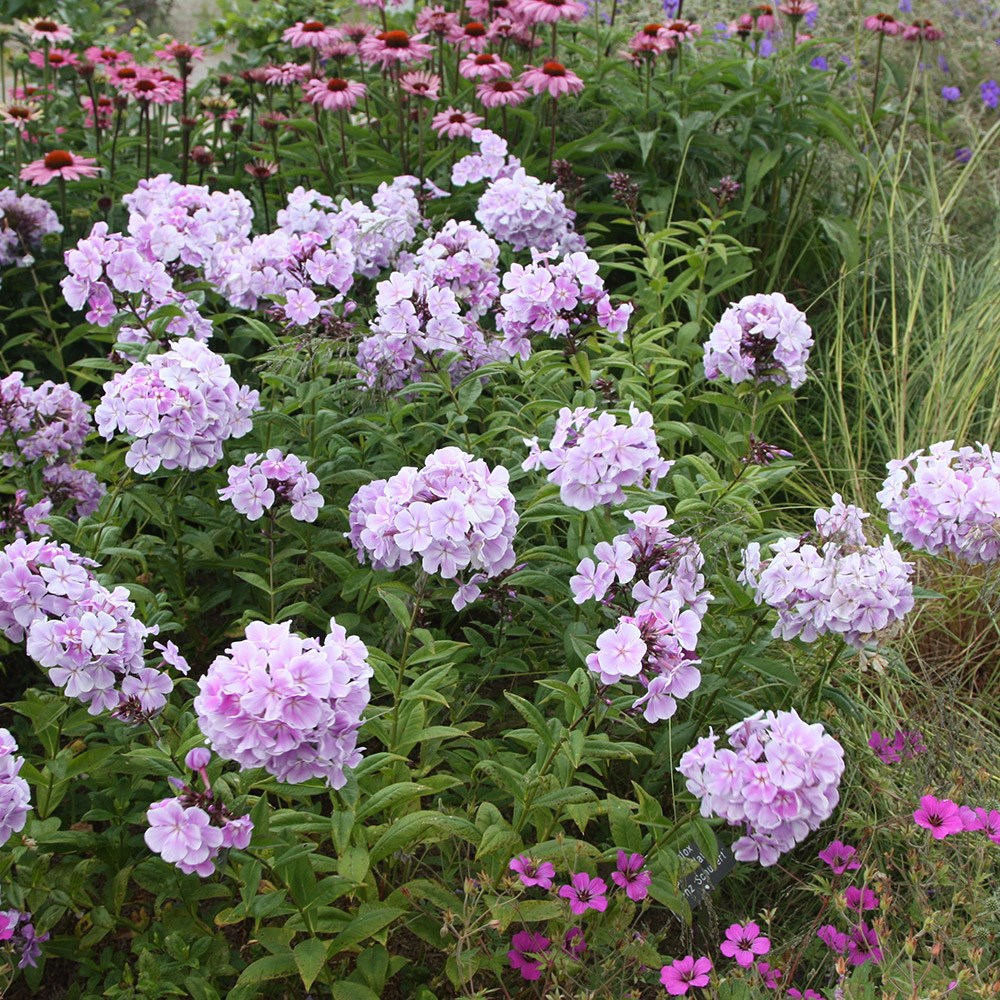
Source: Pinterest
Laura Phlox
There are enormous, dense panicles of fragrant purple flowers with a white eye on the Laura plant, which reaches a height of approximately 3 feet and has mildew-resistant leaves.
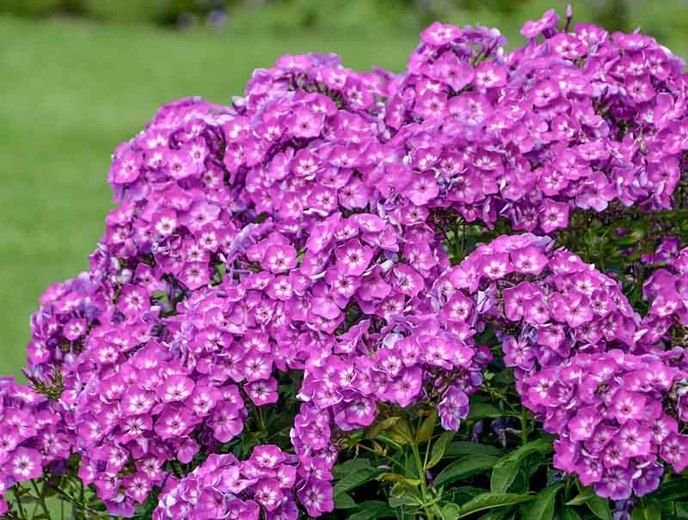
Source: Pinterest
Phlox: Growing tips
- Phlox prefers full sun but may still bloom if given little shade. Aim for roughly 6 hours of sun exposure every day, minimum.
- The phlox plant needs watering anytime there is a dry period or when the leaves start to droop since it is a plant that does not tolerate dryness well. For optimal growth, phlox needs approximately an inch of water each week. Water the plant’s root zone rather than its foliage to maintain its leaves in good condition.
- Cultivate in loam that has been amended with compost or other organic materials and is consistently damp but not soggy. Soil with mild alkalinity is ideal for phlox.
When to plant: Phlox should be planted in the spring while the earth is still chilly and damp.
How to plant?
- Dig down 12 inches and include some compost and general-purpose granular fertiliser (follow package directions).
- Make sure the crown of the plant (where the roots join the stem) is flush with the surface of the soil when you plant it.
- You should bury the roots and give them plenty of water.
Propagation
You may grow phlox from seed either in the ground or in a pot. It’s also possible to start the seeds inside and then transfer them outside. Begin indoors 6-8 weeks before the last frost if you want to enjoy the bloom in the spring. Young plants may be moved to more permanent locations in the garden once they have been transplanted.
Garden phlox may be easily cloned by dividing the existing plant. At the first sign of spring or late summer, dig up the plants, cut the clumps apart with a sharp knife, and replant the portions right away. At least 3–4 new shoots and some of the root system should be included in each division. Plants of the genus phlox may be propagated from early summer stem cuttings.
Phlox: Care tips
To promote a second wave of blooms after the first wave has faded, remove the dead flower heads. A further benefit is that this method prevents the plants from going to seed (volunteer seedlings will be inferior to the parent plant and should be treated as weeds). For future disease prevention, cut back all stems to the ground in the autumn and then remove them from the region.
Plant phlox in early spring and fertilise them. All-purpose granular fertiliser should be sprinkled around the plant’s root systems according to the instructions on the packaging. Adding a few inches of compost as a top dressing to the plants is another approach to enrich the soil and provide additional nutrients. Pinch back the developing tips of your plants when they are 6 to 8 inches tall to encourage bushier growth and more bloom heads.
Overcrowding among garden phlox plants causes a decline in flowering. Every three to four years, you should split the plants to ensure continuous blooming. There is no need to split the plants right away so long as they are producing flowers.
Garden phlox is particularly vulnerable to pests including aphids, beetles, caterpillars, spider mites, and whiteflies. It easily contracts diseases like powdery mildew. Stems may be pruned back after blooming to prevent the development of powdery mildew, and mildew-resistant types can be planted.
Phlox: Uses
- Many types of phlox may be used to create stunning garlands, tiaras, and bouquets for special occasions.
- The earliest flowering types are ideal for welcoming the arrival of spring.
- Cut phlox flowers provide a whimsical touch and a pleasant fragrance, flower arrangements, etc.
- Those that develop to be taller are ideal for use as borders, while those that stay shorter are useful as edgers or ground coverings.
- Butterflies and hummingbirds are drawn to phlox in large numbers.
- Traditionally, the whole wild blue phlox plant has been used to brew a soothing tea for digestive issues, including pains and indigestion.
- Dried phlox leaves may be brewed into a tea that is said to be beneficial for anything from purifying the blood to curing skin ailments like boils and dermatitis.
Phlox: Toxicity
Whether you have kids or dogs, you may feel at ease planting phlox in your garden. There are no known harmful effects on domesticated or wild animals. There is little risk to your kid or pet from ingesting phlox.
FAQs
What is a phlox flower used for?
Tea made from the whole wild blue phlox plant has been used to treat stomach and intestinal problems like pain or indigestion. People think that drinking tea made from dried Phlox leaves can clean the blood and treat skin problems like boils and eczema.
Does tall phlox need proper sunlight?
In addition to being pretty to look at, many tall garden phlox also smell nice. To bloom, tall garden phlox needs full sun.
Does phlox like lots of water?
Phlox doesn't like drought, so you should water it when it's dry or when the leaves start to wilt. During the growing season, they should get about an inch of water per week.
Housing News Desk is the news desk of leading online real estate portal, Housing.com. Housing News Desk focuses on a variety of topics such as real estate laws, taxes, current news, property trends, home loans, rentals, décor, green homes, home improvement, etc. The main objective of the news desk, is to cover the real estate sector from the perspective of providing information that is useful to the end-user.
Facebook: https://www.facebook.com/housing.com/
Twitter: https://twitter.com/Housing
Email: [email protected]











